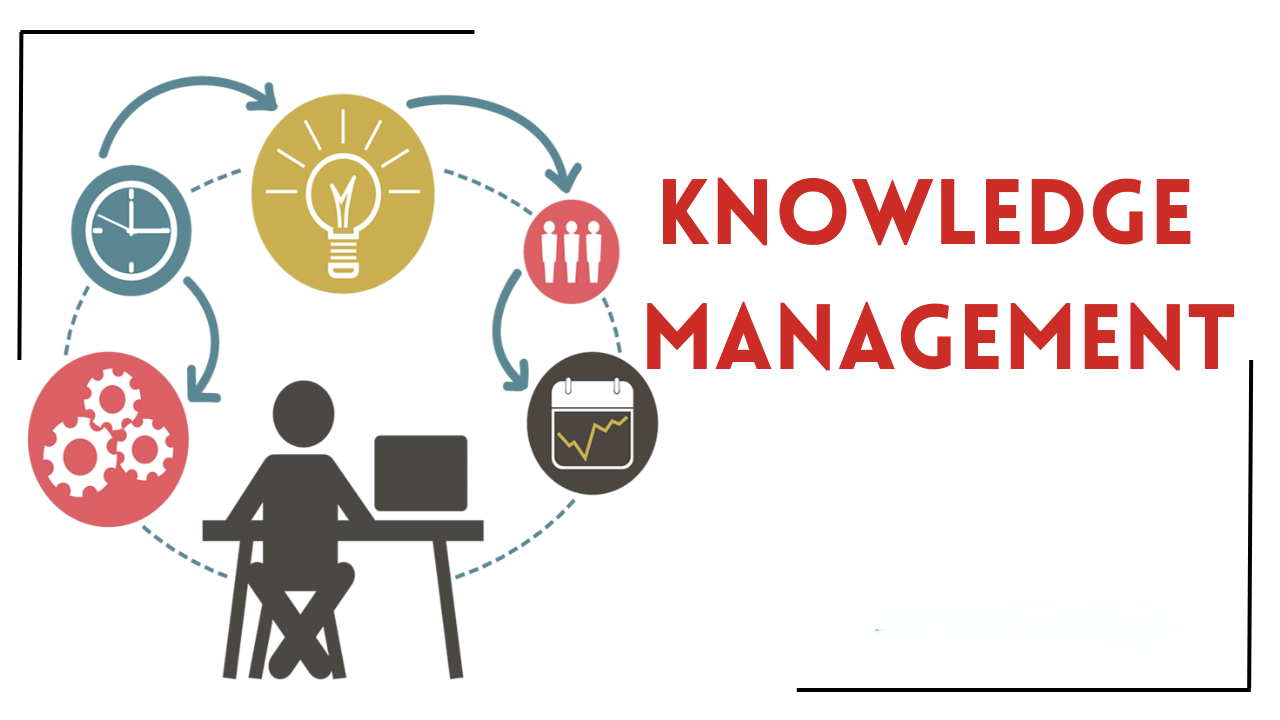In today’s rapidly advancing digital landscape, organizations are recognizing the pressing need to harness and organize their collective knowledge. This is why having a Knowledge Management System (KMS) and learning how to use knowledge management systems are crucial in capturing, distributing, and effectively using knowledge within a company. This process can lead to increased efficiency, innovation, and competitive advantage.
Knowledge Management Systems: Definition and Importance
Alt text: A mug on a table with a book with the word “KNOWLEDGE” behind it.
A Knowledge Management System is an IT-based system built to collect, organize, share, and analyze knowledge in various forms within an organization. This system connects individuals with the know-how and the right information they need to complete tasks more efficiently, enable innovation, and facilitate decision-making.
Companies use a Knowledge Management System not only to preserve institutional knowledge but also to bridge the gaps between employees and management. Additionally, the system reduces redundant tasks and helps identify areas of expertise. Furthermore, it protects intellectual capital by preserving know-how when employees leave the company. A well-implemented Knowledge Management System also brings improved customer satisfaction and faster responses to market changes.
Evaluating Organizational Needs for a Tailored Knowledge Management Approach
Alt text: Group of people in a conference room discussing how to use knowledge management system
Before adopting a Knowledge Management System, you need to evaluate the needs of your organization—the company’s size, operations, and knowledge sharing practices. Identifying areas where knowledge is not effectively captured or shared is a critical first step.
This assessment should show the features and functionalities needed from a KMS. For example, companies with a global workforce may prioritize multilingual support and accessibility across time zones. Also, different departments may have unique needs.
Stakeholders need to be engaged. Employees who will use the KMS could provide insight into the features that would improve workflow, while management cites big-picture needs.
Additionally, consider your existing technological infrastructure. The new KMS should complement the company’s in-use tools, not require a steep learning curve, and encourage staff to embrace the new system.
Building a Knowledge-Centered Culture
Understanding how to use knowledge management effectively is the first crucial step in cultivating an environment primed for growth and agility. Thus, you should build a knowledge-sharing culture where employees are encouraged and rewarded for contributing to the KMS. This begins with management communicating the value of knowledge sharing and continuous learning.
Then, employees must be trained on how to use the KMS effectively. Training should be engaging and tailored to various learning styles and organizational roles. User guides and resources can also help.
Incentivize employees to participate actively in the KMS. Incentives like recognition programs, career advancement opportunities, or monetary rewards can drive user engagement and make knowledge sharing a norm.
Key Features of Effective Knowledge Management Systems
An effective Knowledge Management System should be intuitive and user-friendly, ensuring that employees can navigate and utilize the platform easily. It must also be scalable, able to handle increased loads without compromising performance. Additionally, it must have stringent security measures in place to protect sensitive data from unauthorized access.
The KMS must have robust search functionalities: A responsive search engine, coupled with well-organized content and tagging systems, saves time and prevents frustration. Collaboration features such as forums, comment sections, or integration with communication tools also enhance the system’s effectiveness.
Lastly, the KMS should have reporting and analytics capabilities to track usage patterns, identify knowledge gaps, and measure content effectiveness. These insights can inform strategies for improving the system and its contents.
Metrics and KPIs for Knowledge Management Systems
To ensure the Knowledge Management System delivers value, it must meet certain key performance indicators (KPIs) that highlight whether certain areas are excelling or need improvement. Typical metrics may include user engagement rates, the frequency of content updates, and the speed at which users find the information they need.
Customer satisfaction scores can provide insights into the external benefits of the KMS, especially in organizations that rely on knowledge sharing for customer support. Lower resolution times and improved service quality often directly correlate with an effective KMS.
Internally, employee feedback and retention rates may serve as indicators of the KMS’s success in boosting morale and productivity. When employees are content with their tools and resources, they have higher job satisfaction and organizational commitment.
Finally, it’s vital to track the return on investment (ROI) for the KMS. If the benefits in efficiency and effectiveness outweigh the costs, then the expenditure and continued investment in knowledge management initiatives could be justified.
Overall, the implementation of a Knowledge Management System is multifaceted. But if you prioritize user-centric features and emphasize continuous assessment and improvement, your company could enjoy the immense benefits of awell-orchestrated KMS.



